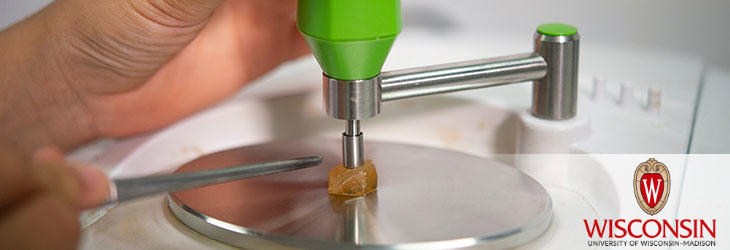Research Tools

Microtube Scaffold for Sensing and Stimulating Nerve Cell Connections
WARF: P100158US01
Inventors: Robert Blick, Justin Williams, Minrui Yu, Yu Huang
The Wisconsin Alumni Research Foundation (WARF) is seeking commercial partners interested in developing a method to grow nerve cells through semiconductor microtubes that act as tunable electrodes for sensing and stimulating nerve cell connections.
Overview
Studying how neurons and other cells work may require stimulating individual or small clusters of cells. The cells conventionally are stimulated through the use of fine electrodes inserted into or near the cells and connected by leads to external equipment. The cells may be stabilized with the tip of a pipette or by using an on-chip cell measurement system.
Unfortunately, electrode systems can be difficult to place in tissues having complex interactions among neurons. They also can be impractical when multiple, closely-spaced measurements are necessary. An improved method for sensing and stimulating nerve cell connections is needed.
Unfortunately, electrode systems can be difficult to place in tissues having complex interactions among neurons. They also can be impractical when multiple, closely-spaced measurements are necessary. An improved method for sensing and stimulating nerve cell connections is needed.
The Invention
UW-Madison researchers have developed a method to produce a scaffold system for neurons that permits guided growth or interconnection of neurons and sensing or stimulation of neural activity. The method involves growing nerve cells through doped semiconductor microtubes that act as tunable electrodes for sensing and stimulating nerve cell connections. The tubes allow the growth and interconnection of the neurons to be controlled, and sensors and/or stimulating probes incorporated along the length of the tubes can be used to provide precisely located but spatially separated measurements and stimulation.
The tubes are made of semiconducting thin-film nanomembranes, may vary in length and have diameters ranging from one to 100 microns. Cells are placed near the opening of the tube and preferentially grow through the tube. The microtubes form a coaxial probe around the nerve cell growth, effectively coupling an electrode to the neurons. The tube also acts to protect the neuron from a culture solution that may produce ion leakage, affecting signal propagation and introducing signal noise.
The tubes are made of semiconducting thin-film nanomembranes, may vary in length and have diameters ranging from one to 100 microns. Cells are placed near the opening of the tube and preferentially grow through the tube. The microtubes form a coaxial probe around the nerve cell growth, effectively coupling an electrode to the neurons. The tube also acts to protect the neuron from a culture solution that may produce ion leakage, affecting signal propagation and introducing signal noise.
Applications
- Nerve cell studies involving local delivery of electrical current to neural cells
- Drug testing by pharmaceutical companies
Key Benefits
- Allows in vivo placement of nerve cell connections within an electrode
- Increases signal-to-noise ratio by increasing the surface area of the electrode interfacing with the nerve cell connections
Stage of Development
Tubes of different lengths and diameters have been constructed and neurons have been shown to grow through the tubes.
Additional Information
For More Information About the Inventors
Related Technologies
Publications
For current licensing status, please contact Jennifer Gottwald at [javascript protected email address] or 608-960-9854
- Koitmae et al. 2016. Approaching Integrated Hybrid Neural Circuits: Axon Guiding on Optically Active Semiconductor Microtube Arrays. Adv. Mater. [inside cover] DOI: 10.1002/admi.201600746
- Read an article related to this technology